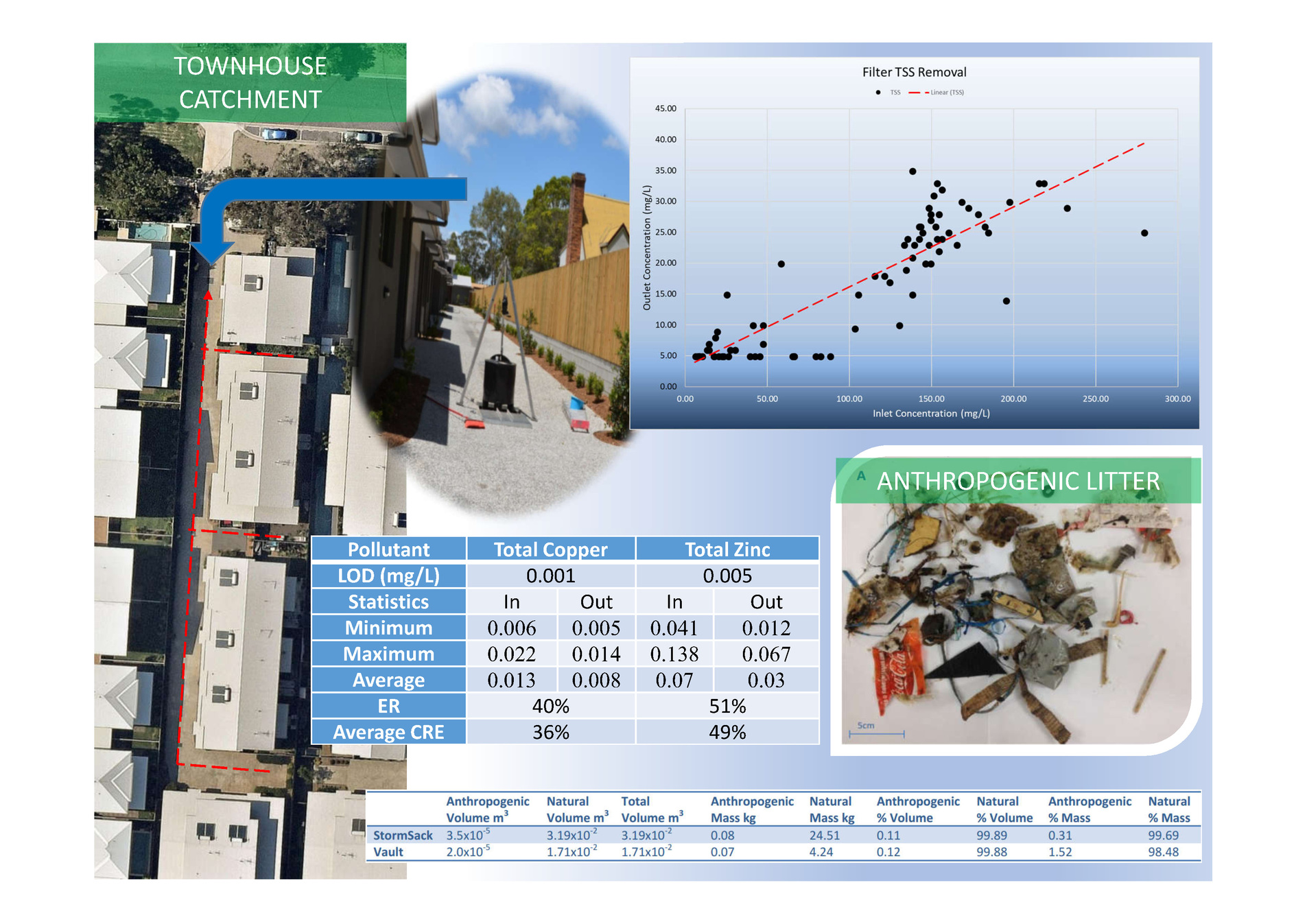Urban stormwater runoff from a medium-density residential development in southeast Queensland has been monitored in the field since November 2013. A treatment train installed on the site includes rainwater tanks collecting roofwater, 200-micron mesh baskets installed in grated gully pits and two 850 mm high media filtration cartridges installed in an underground 4 m3 vault. A monitoring protocol developed by research partners, Queensland University of Technology (QUT), guided the monitoring process over a 4.5-year period. Heavy metals were included in the list of analytes during the monitoring period as the catchment is within 1 km of the environmentally-sensitive Moreton Bay, Queensland. Removal efficiencies observed at this site for the regulated pollutants; total suspended solids (TSS), total phosphorus (TP) and total nitrogen (TN) for the pit baskets were 61%, 28% and 45% respectively. The cartridge filters removed 78% TSS, 59% TP, 42% TN, 40% total copper and 51% total zinc. As the measured influent concentrations to the cartridge filters were low when compared to industry guidelines, the dataset was merged with international field results for TSS (n=39) and TP (n=32) but truncated within anticipated guideline levels. The combined dataset for the media filter demonstrates performance at 89% TSS, 66% TP and 42% TN. The total gross pollutant generation rate from the medium-density residential catchment was observed to be 0.24 m3/Ha/year, with a corresponding air-dried mass of 142.5 kg/Ha/year. Less than 2% of the gross pollutant mass was anthropogenic. The findings of this research suggest that the treatment train, and in particular the media filter, holds promise for the removal of total copper and total zinc, in addition to TSS, TP and TN, from urban stormwater runoff. Based on a maximum, low risk trigger TN concentration of 1.5 mg/L, the field test data from 4.5 years of operation and standard maintenance, suggests a 5.5-year replacement interval for the media filters.

